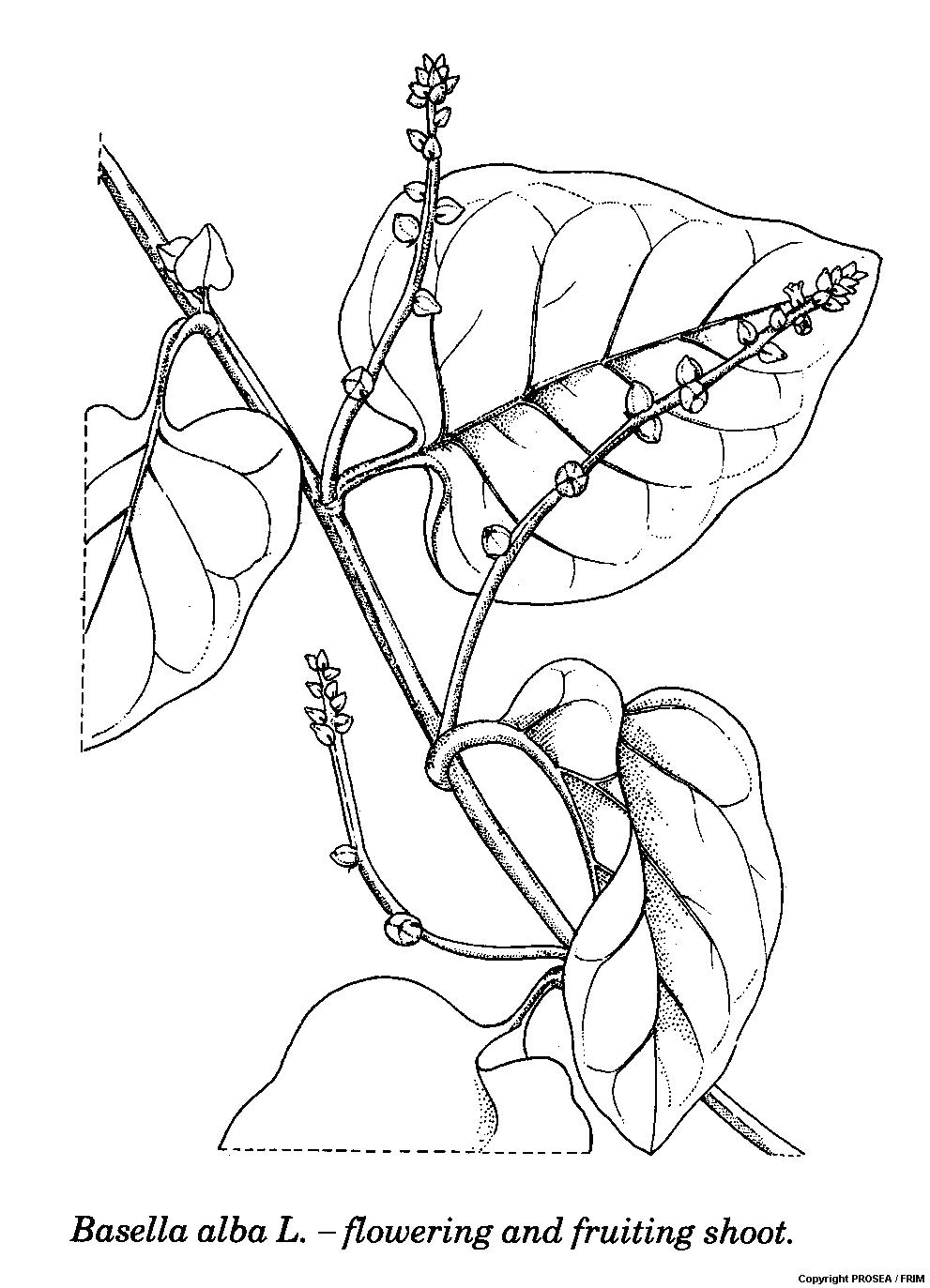Basella alba L.
Family
Basellaceae
Synonyms
Basella rubra L., Basellla lucida L., Basella cordifolia Lamk.
Vernacular Names
|
Malaysia |
Gendola, remayong, tembayung. |
|
English |
Ceylon spinach, Indian spinach, Malabar nightshade. |
|
Indonesia |
Gandola, genjerot. |
|
Philippines |
Alugbati, dundula, libato. |
|
Cambodia |
Chralong. |
|
Laos |
Pang. |
|
Thailand |
Phakpang (Northern), phakplang, phakplang-yai (Central). |
|
Vietnam |
M[oof]ng t[ow]i, m[uf]ng t[ow]i. |
|
French |
Baselle, brede de Malabar. |
Geographical Distributions
Basella alba is usually considered native of southern Asia (India), but its exact origin is not known. In Southeast Asia and China, it has been grown since ancient times. It is now widely cultivated in tropical Asia and America, and is even grown in temperate zones as an annual. In Southeast Asia, it is particularly popular in Malaysia and the Philippines.
Description
Basella alba is a short-lived perennial herb, measures 2-6 m long and succulent. It is stem-twining, slender, smooth, green or purplish.
The leaves are arranged alternate, ovate to heart-shaped with short fleshy petiole, measuring 5-15 cm x 4-10 cm, fleshy and dark green or purplish.
The inflorescence is a spike, hanging, axillary and measures 3-21 cm long. The flowers are conspicuous, bisexual, sessile, measure 3-4 mm long, white, pink or purple. The ovary is rounded with 3 styles and it is united at the base. There are 5 stamens.
The fruit is a depressed-spherical pseudo-berry measuring 4-7 mm x 5-10 mm, purplish-black, with fleshy perianth, which encloses the ovary after flowering, and contains a violet juice. Seed is single.
Ecology / Cultivation
Basella alba does well in tropical lowlands at elevations up to 500 m, but it survives even at 3000 m altitude and in temperate regions. It is a short-day plant and flowering is precluded at a day length of more than 13 hours. It has a C4-cycle photosynthetic pathway similar to that of amaranth. Water stress promotes early flowering. B. alba is tolerant of many soils, but sandy loam appears to be most suitable.
Line Drawing / Photograph
Read More
1) Safety
References
-
Plant Resources of South-East Asia No.8: Vegetables.


